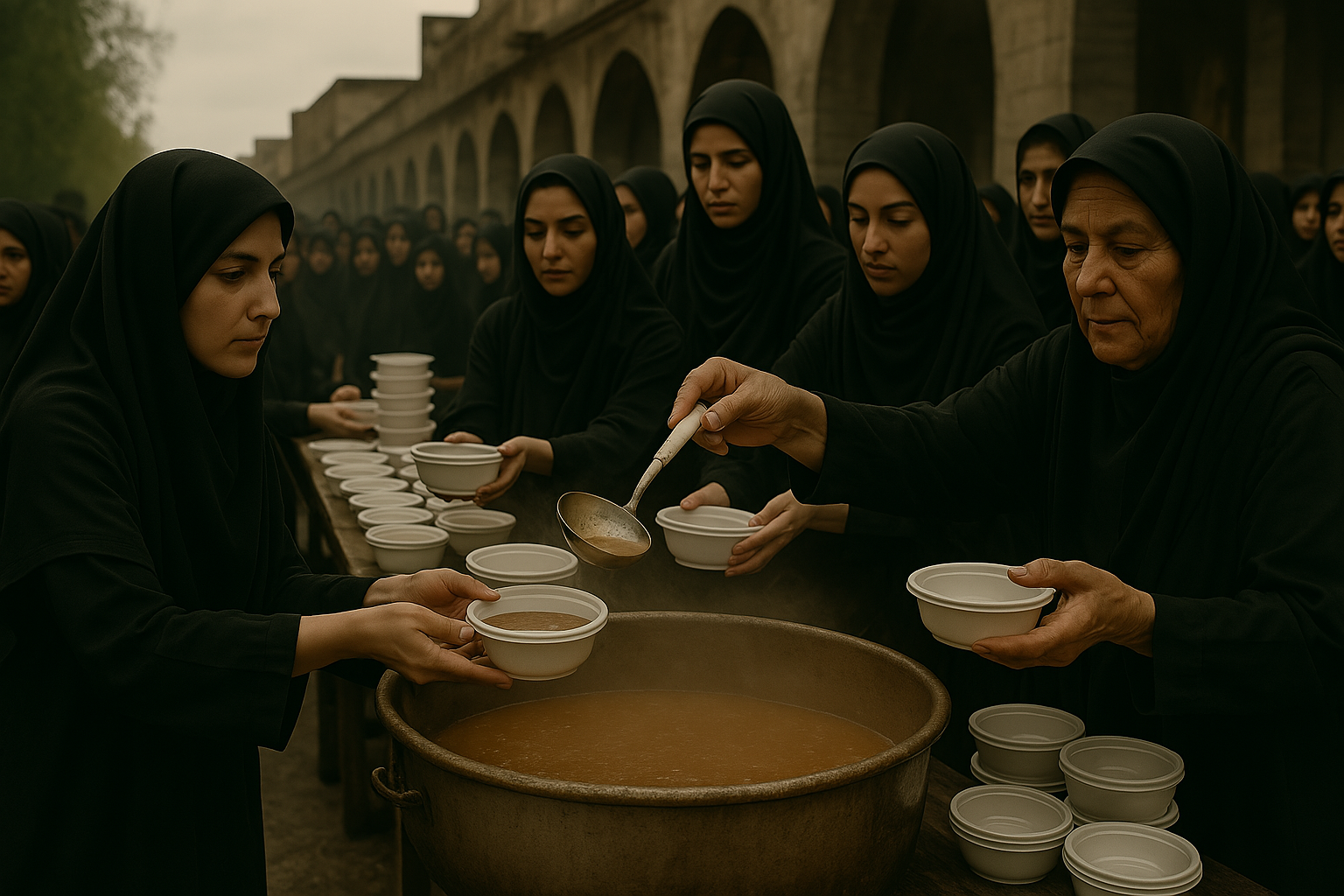The Sacred Month of Muharram: A Guide to Shia Commemorations for Global Readers
The air fills with the rhythmic beat of drums, the streets flow with crowds dressed in black, and the poignant cries of mourners echo through the night—this is Muharram, the sacred month of remembrance for Shia Muslims worldwide. At its heart lies the tragedy of Karbala, a story of sacrifice, resistance, and unwavering faith that transcends time and geography. For outsiders, these rituals may appear intense or even mysterious, but beneath the surface lies a profound spiritual and cultural tradition. This article delves into the essence of Muharram observances, explaining their historical roots, symbolic meanings, and global variations.
---
### 1. The Historical Backdrop: Why Muharram Matters
In the scorching desert of Karbala (modern-day Iraq) in 680 CE, a small group of 72 men, led by Imam Hussain (the grandson of Prophet Muhammad), stood against an army of thousands sent by the Umayyad caliph Yazid. Hussain refused to pledge allegiance to what he saw as a corrupt ruler, choosing instead to uphold justice—even at the cost of his life. The battle ended in massacre: Hussain was beheaded, his family taken captive, and his cause seemingly lost.
Yet, for Shia Muslims, Karbala was not a defeat but a moral victory. Hussain’s stand became the ultimate symbol of resistance against tyranny, inspiring centuries of devotion. Muharram, the first month of the Islamic calendar, marks the anniversary of these events, with the 10th day (Ashura) as the climax of mourning.
---
### 2. Key Rituals and Their Meanings
#### A. Majlis (Mourning Gatherings)
Central to Muharram are the *majalis* (singular: majlis), religious assemblies where the tragedy of Karbala is recounted. A speaker (*zakir* or *rawda khwan*) narrates the events with emotional intensity, often bringing mourners to tears. These gatherings are held in homes, mosques, and community centers, reinforcing collective grief and solidarity.
- Why it matters: The majlis is not just storytelling—it’s a spiritual reconnection with Hussain’s sacrifice, reminding believers of the cost of truth.
#### B. Matam (Lamentation Rituals)
One of the most visible—and misunderstood—aspects of Muharram is *matam*, rhythmic chest-beating or self-flagellation (with hands, chains, or blades). While images of bloodied mourners may shock outsiders, practitioners see it as an expression of empathy with Hussain’s suffering.
- Variations:
- *Sineh-zani* (chest-beating) is common in Iran, Iraq, and South Asia.
- *Tatbir* (using blades) is controversial and banned in some countries.
- Many Shia scholars discourage extreme forms, promoting blood donation as an alternative.
#### C. Processions (Juloos/Ashura Marches)
Cities with large Shia populations—like Lucknow, Karachi, Najaf, and Beirut—witness massive processions. Mourners chant *"Ya Hussain!"*, carry black flags (*alam*), and reenact scenes from Karbala. Some wear shrouds to symbolize readiness for martyrdom.
- Symbolism: The march is a public declaration of loyalty to Hussain’s ideals, rejecting oppression in any era.
#### D. Ta’ziyeh (Passion Plays)
In Iran, *Ta’ziyeh*—a theatrical reenactment of Karbala—blends drama, music, and ritual. Actors portray Hussain, his half-brother Abbas, and the villain Shimr, moving audiences to tears. UNESCO recognizes Ta’ziyeh as intangible cultural heritage.

#### E. Niyaz/Nazar (Food Offerings)
A unifying feature of Muharram is communal meals (*niyaz*). Dishes like *haleem* (a meat and wheat stew), *shola* (sweet rice), or *qahwa* (Arabic coffee) are distributed freely. This act honors Hussain’s hunger in Karbala and reinforces charity.
- Global twist: In Trinidad, "Hosay" (a local adaptation) includes tassa drumming and Indian sweets.
### 3. Regional Variations: How the World Mourns
While the core rituals remain, local cultures add unique flavors:
- Iraq: Millions walk to Karbala for Arbaeen (40 days after Ashura), the world’s largest annual pilgrimage.
- India/Pakistan: Elaborate *tazias* (replicas of Hussain’s tomb) are carried in processions.
- Lebanon: Scenes of Abbas carrying water (he died fetching it for Hussain’s children) are vividly enacted.
- West: Cities like London and Toronto host interfaith blood drives in Hussain’s name.
### 4. Addressing Misconceptions
- "Isn’t this violence?": Most matam is symbolic; many Shia prefer peaceful mourning (e.g., poetry, charity).
- "Do Shia worship Hussain?": No—he’s revered as a martyr, not divine.
- "Why mourn so intensely?": Grief is a form of spiritual protest against injustice, past and present.
### 5. Why Muharram Resonates Globally
Beyond religion, Hussain’s story has inspired figures like Gandhi and Mandela. His cry—*"Every day is Ashura, every land is Karbala"*—turns grief into a universal call for justice.
For travelers or observers, attending a Muharram event (with respect) can be a powerful cultural experience. As one Lebanese poet wrote: *"They tried to bury Hussain’s light. Instead, they planted a forest of flames."*



دیدگاه خود را بنویسید